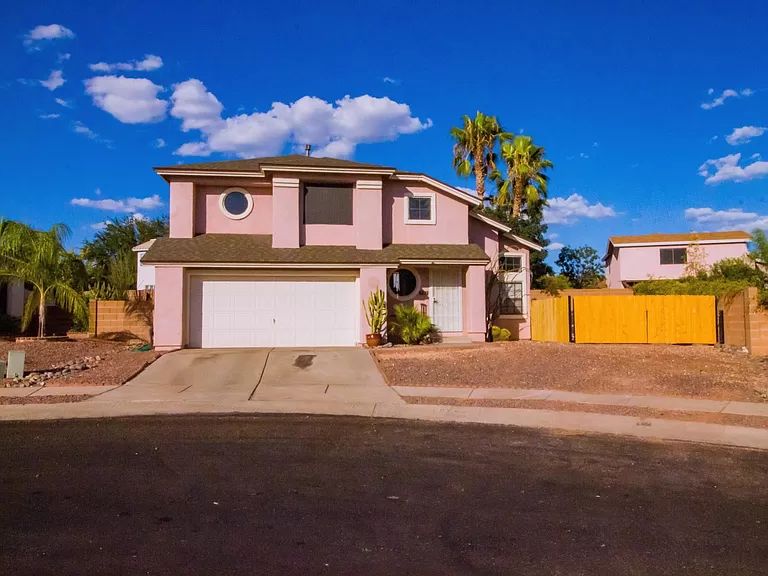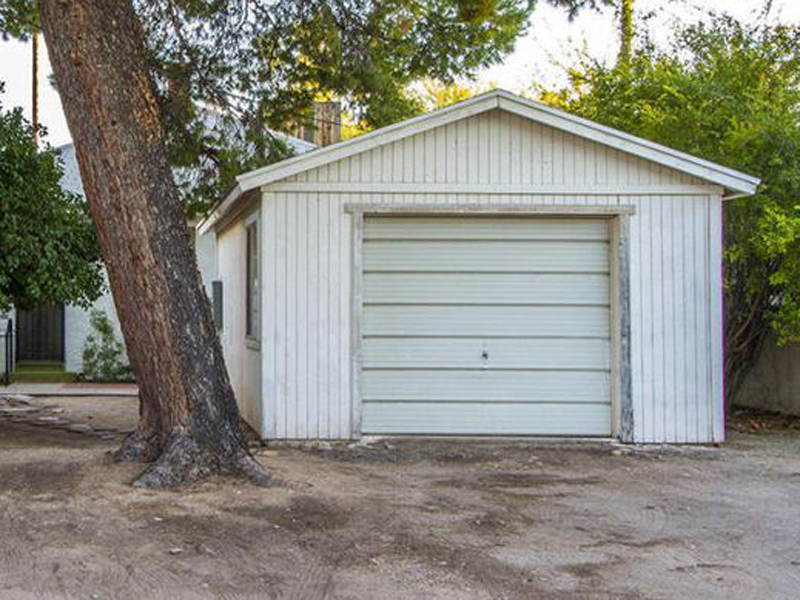Is Your Garage Door Stuck? Right here's What to Do First
When your garage door will not open, start with these essential safety and security checks before attempting any repair services. Initially, guarantee nobody is standing near the door and that lorries are free from the opening. Try to find apparent signs of damages like broken panels, curved tracks, or hanging cable televisions. If you see a snapped spring or seriously harmed parts, quit right away and call a specialist—-- these repair services need specialized devices and proficiency to take care of safely.

Examine These 6 Things Before Calling a Professional
Prior to assuming you need pricey repair work, run through this quick analysis checklist that solves most garage door troubles:
-
Source of power: Verify the opener is connected in and the outlet is functioning
-
Remote batteries: Change dead batteries in your remote
-
Hands-on lock: Inspect if someone unintentionally engaged the hand-operated lock
-
Blockages: Try to find debris blocking the door's path or sensors
-
Emergency release: Make sure the red emergency cable hasn't been pulled
-
Breaker: Verify the garage circuit hasn't stumbled
These straightforward checks fix approximately 70% of garage door problems without calling for professional treatment.
10 Common Reasons Your Garage Door Won't Open
Recognizing why your garage door opener isn't working helps you pick the ideal remedy. Below are the most regular reasons property owners encounter:
Dead remote batteries stand for the easiest fix—-- when batteries die, the remote can't send out signals to the opener. Power blackouts or stumbled breakers cut electricity to the motor. Broken springs protect against the door from lifting appropriately and need instant specialist interest. Sensing unit misalignment causes security systems to block door procedure. Track blockages quit rollers from moving smoothly. Motor overload triggers automatic shutoffs when the opener detects resistance. Limitation switch problems perplex the opener regarding door position. Wire damage disrupts the lifting system. Weather-related problems influence door movement throughout severe temperatures. Part wear from age gradually minimizes system performance.
Issue # 1: Dead Remote Batteries
When your wall button works yet your remote doesn't, dead batteries are usually the wrongdoer. A lot of garage door remotes use either 3-volt lithium or 12-volt alkaline batteries. Get rid of the back cover of your remote and inspect the battery kind. Change with fresh batteries and evaluate the remote. If it still doesn't work, you might require to reprogram it to your opener. Consult your opener's handbook for specific reprogramming guidelines, as the process varies by producer.
Problem # 2: Power Supply Issues
Garage door power problems commonly come from loosened connections or tripped circuits. Examine that the opener is firmly connected into its outlet—-- vibration can loosen connections in time. Evaluate the outlet with one more tool to validate it's working. Examine your home's breaker box for tripped circuits, especially if you've experienced tornados or power fluctuations. GFCI electrical outlets might have tripped and require resetting. If the opener has power but won't respond, the problem most likely lies elsewhere in the system.
Trouble # 3: Broken or Damaged Springs
Broken garage door springtimes are amongst one of the most harmful elements to deal with. If you listen to a loud bang from your garage or see the door feels incredibly heavy when trying to raise manually, a springtime has actually likely broken. Torsion springs run flat above the door, while expansion springs rest on either side. Never attempt springtime repair services on your own—-- these components keep incredible stress that can trigger severe injury or fatality. Professional substitute typically costs $150-$300 yet ensures your safety and security.
Issue # 4: Blocked Security Sensing Units
Modern garage doors feature safety sensing units that protect against closure when objects are detected. These sensors can stop the door from opening if they're unclean, misaligned, or blocked by debris. Tidy sensor lenses with a soft fabric and make sure nothing obstructs the unseen beam of light between them. Check that sensors are properly aligned—-- a lot of have indication lights that show link status. Sensing unit problems typically solve with straightforward cleaning and change.
Problem # 5: Track Obstructions or Damage
Garage door tracks guide rollers as the door moves up and down. Dust, particles, old grease, or little objects can jam the system. Check tracks aesthetically and eliminate any type of obstructions with a brush or fabric. Search for dents, flexes, or bending that could impede smooth operation. Small track modifications are possible for handy property owners, yet substantial damages calls for professional repair work to prevent additional issues or safety and security risks.
Trouble # 6: Garage Door Opener Motor Issues
When the garage door motor runs yet the door doesn't relocate, numerous concerns could be liable. The motor may be overloaded and shutting off as a precaution. Gear wear, especially in older units, can avoid appropriate procedure. Chain or belt drive troubles influence power transmission. If you listen to uncommon grinding, clicking, or humming sounds, stop utilizing the opener immediately. Electric motor repair services commonly cost more than replacement, particularly for devices over one decade old.
Detailed Do It Yourself Troubleshooting Overview
Follow this systematic technique to garage door repairing while focusing on security throughout the procedure:
Action 1: Examine the wall button first. If it works but the remote doesn't, focus on remote issues. If neither jobs, examine power supply.
Step 2: Take a look at the hands-on launch cord. If it's been pulled, the opener is disengaged from the door. Press the cart back to reconnect.
Step 3: By hand check the door by disengaging the opener and trying to lift the door by hand. It needs to move efficiently and remain in location when half-open.
Tip 4: Evaluate noticeable parts for damage, paying unique interest to springs, cords, and tracks.
Step 5: Inspect all safety functions including sensing units, restriction switches, and auto-reverse functions.
Step 6: Test various controls (remote, wall surface button, keypad) to separate the problem resource.
Constantly wear shatterproof glass and work handwear covers when doing inspections, and never attempt fixings on springtimes or high-tension parts.
When to Call a Professional vs. DIY Solutions

Knowing when to call a garage door expert versus attempting DIY fixings shields both your safety and security and your wallet. Manage these concerns yourself: dead remote batteries, power supply problems, small track cleansing, sensor cleansing and positioning, and standard lubrication.
Never try these repair work yourself: springtime substitute or modification, cable repair work, significant track adjustment, electrical circuitry concerns, opener motor substitute, or any type of fixing involving high-tension elements. Specialist service technicians have actually specialized tools, training, and insurance policy to manage harmful fixings securely.
Take into consideration repair work prices versus substitute prices, especially for doors over 15 years of ages. Modern garage doors supply better safety and security attributes, energy effectiveness, and integrity than older models.
Emergency Situation Garage Door Solutions
When you're stuck to a garage door that will not open up and require instant accessibility, comply with these emergency situation procedures:
Handbook Operation: Pull the red emergency situation release cord to disengage the opener. This enables hands-on procedure yet calls for correct technique to stay clear of injury. Raise the door gradually and uniformly, using leg muscle mass rather than your back. The majority of residential doors evaluate 100-150 pounds, making them workable for most adults.
Temporary Solutions: If the door opens up by hand however will not keep up, prop it open with sawhorses or clamps—-- never use your body or automobiles as supports. For doors that will not close entirely, ensure the opening is secured if you have to leave.
Emergency situation Solution: Numerous garage door companies offer 24/7 emergency solution for circumstances involving safety and security worries, trapped automobiles, or complete system failings. While a lot more pricey than regular solution telephone calls, emergency repair work supply immediate solutions when needed most.
Safety Caution: What NOT to Do
Garage door security needs understanding harmful fixings that must never ever be attempted by property owners:
Never ever try to fix springs—-- they keep enough energy to trigger deadly injuries when they snap or are incorrectly dealt with. Do not force a stuck door—-- this can harm the opener, tracks, or door panels, producing more pricey issues. Avoid bypassing safety and security functions—-- sensing units and auto-reverse devices stop serious injuries and property damages.
Do not ignore odd noises—-- grinding, scraping, or banging audios indicate troubles that intensify in time. Never ever utilize the door if cords are frayed or broken—-- the door might drop suddenly. Do not attempt electric repair work unless you're a certified electrical expert—-- garage door openers make use of both 120V household current and low-voltage control circuits.

Precautionary Maintenance to Stay Clear Of Future Issues
Normal garage door upkeep prevents most typical troubles and prolongs system lifespan dramatically:
Month-to-month Jobs: Visual evaluation of all components, evaluating auto-reverse safety and security functions, inspecting and tightening up hardware, and cleaning tracks and sensing units.
Quarterly Jobs: Oiling all relocating parts with ideal garage door lubricating substance, testing guidebook procedure, and inspecting weather sealing.
Yearly Tasks: Specialist examination and tune-up, spring adjustment if required, and opener maintenance including belt or chain adjustment.
Seasonal Tasks: Planning for weather extremes, examining insulation, and readjusting opener settings for temperature changes.
Consistent maintenance costs far less than emergency situation repairs and ensures trusted operation year-round.
Garage Door Will Not Open FAQs
Why won't my garage door open with the remote but works with the wall button?
This typically indicates dead remote batteries, signal disturbance, or the demand to reprogram the remote. Inspect batteries initially, then consult your opener manual for reprogramming directions.
Can I by hand open my garage door if the power is out?
Yes, pull the red emergency launch cable to disengage the opener, then raise the door by hand. Be planned for the door's full weight and lift with proper strategy to avoid injury.
Just how do I understand if my garage door springtime is broken?
Indications include a loud bang from the garage, the door feeling exceptionally heavy when lifting by hand, visible voids in the springtime coils, or the door only opening a few inches before quiting.
Is it safe to use my garage door if it will not open all the way?
No, partial procedure indicates mechanical problems that could worsen unexpectedly. Stop using the door and have it inspected by a professional to stop additional damages or injury.
What should I do if my garage door opens up however won't close?
Check safety sensing units for obstructions or imbalance, check out the tracks for particles, and evaluate the auto-reverse function. If these do not fix the trouble, seek advice from an expert.
Just how much does it set you back to repair a garage door that will not open up?
Expenses vary extensively depending on the trouble: battery substitute ($5-$10), specialist diagnosis ($50-$100), springtime substitute ($150-$300), or opener replacement ($200-$500).
Can weather influence my garage door's capacity to open up?
Yes, severe cold can thicken lubricants and affect steel elements, while warmth can create expansion issues. A lot of problems settle as temperatures normalize, but consistent problems may need specialist focus.
Why does my garage door open a couple of inches then quit?
This generally indicates damaged springs, restriction switch troubles, or track blockages. The opener's safety functions stop procedure when resistance is identified, protecting against damage to the electric motor or door.
Obtain Specialist Help for Complex Concerns
When do it yourself repairing does not settle your garage door issues, professional specialists provide the competence and devices required for secure, lasting repairs. Certified experts diagnose concerns properly, make use of manufacturer-approved components, and offer service warranties on their work.
Professional services include: detailed system inspections, springtime and cable television replacement, opener repair and substitute, track positioning and replacement, electric troubleshooting, and emergency situation solution phone calls.
What to expect: upfront prices, qualified and insured specialists, same-day service for several repairs, and follow-up maintenance suggestions.
A lot of garage door firms provide complimentary estimates for major repair work and can offer prompt services for immediate issues affecting home safety or car gain access to.
Getting Your Garage Door Working Again
A garage door that will not open doesn't need to ruin your day or damage your budget plan. Beginning with straightforward troubleshooting steps like inspecting power, replacing batteries, and taking a look at for obvious obstructions. Several troubles have fast DIY solutions that restore typical procedure within mins.
Nevertheless, identify when expert aid is needed—-- particularly for spring-related issues, electric problems, or complicated mechanical failings. Trying harmful repair work on your own takes the chance of significant injury and usually creates more costly troubles.
Regular upkeep avoids most garage door problems and makes sure trusted procedure for several years ahead. When issues do occur, resolve them immediately to avoid more costly repairs and keep your home's safety and ease. Whether click here you require a straightforward battery replacement or total system overhaul, options exist to get your garage door working smoothly once again.